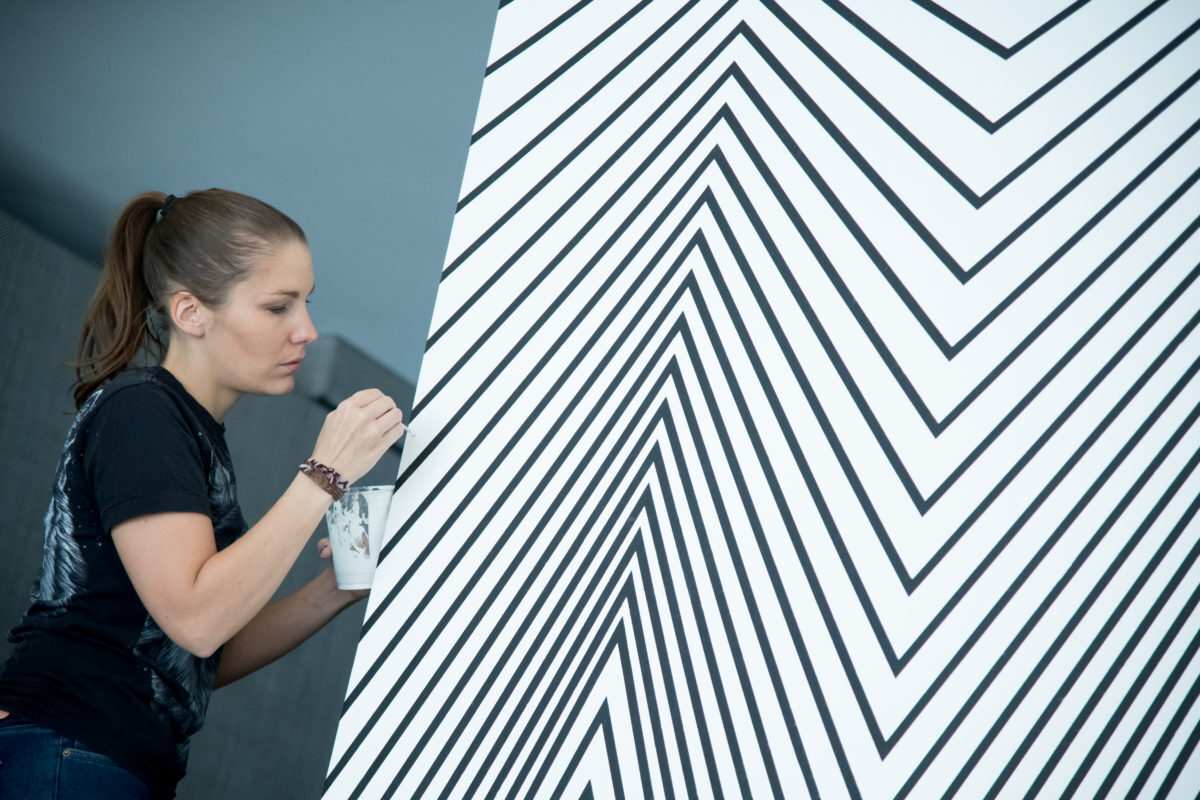When Claudia Comte discusses her early influences, she speaks of a her childhood home: Grancy, a small Swiss village in the countryside where her family lived in “a chalet in the woods…. I was very attracted by those woods.” She adds to her list animals, nature, and video games. She was also marked by images of the American Southwest, whether those were landscapes in classic Westerns—John Ford’s depictions of Monument Valley—or Roadrunner cartoons. When she was young she traveled with her family across those landscapes, which she describes as “a dream come true… to have seen the movies with those backgrounds … it was incredible to see for real…. It all had an impact on my work.” It had an impact on her fashion as well. During her time in St. Louis she wore a stunning pair of calf-length cowboy boots.
On the latest cover of Konig, a English/German art magazine, Comte poses in work overalls with a chainsaw close at hand. The woods, the American West—whether as represented in film or cartoon—and a refreshing sense of humor, guided Comte to chainsaw sculpture while she was still in art school in Lausanne. She remembers that when she first brought up the idea with professors and her fellow students, she received dismissive looks. “Then I came in with these cactus shapes,” she says—cactus shapes as one sees in those Roadrunner cartoons—and those looks changed.
CAM is not graced with her chainsaw sculptures this season, but with a complex and playful wall painting. She “loves” zigzag patterns, and Electric Burst (Lines and Zigzags) relates to work she’s done previously, including Curves and Zigzags, a sculpted wall set within the desert landscape of her dreams. The distinction between Electric Burst and previous zigzag works, as Comte defines it, is that at CAM the “wall painting is doing all the work by itself, not relating to another piece,” or to the California desert. She seeks to “push the limits of painting,” calling the new piece, “the hardcore version” of her wall work.
